Jollof Rice is a beloved West African dish that’s both flavorful and versatile. It isn’t just a dish—it’s a cultural icon, the life of every gathering, and the catalyst for friendly debates over who makes it best! Whether you’re on team Nigerian, Ghanaian, or somewhere in between, one thing is certain: Jollof rice unites people over its irresistible, smoky, savory goodness.
This recipe is tried, tested, and loved by many, designed to help you master the art of perfect, flavorful Jollof rice that’s guaranteed to wow your taste buds. In this recipe, I’ll guide you through every step to achieve the perfect Nigerian Jollof Rice, including tips for that signature smoky flavor. Whether you’re a beginner or a seasoned cook, this recipe will elevate your Jollof game to the next level.
What Makes Jollof Rice Special?
Nigerian Jollof rice combines smoky, tomato-rich flavors with a kick of spice, giving it a bold and unforgettable taste. This recipe is all about balance—roasted peppers, aromatic spices, and perfectly cooked grains of rice. Ready to wow your guests with a party-ready dish? Let’s get cooking!
What You’ll Need
To Cook the Chicken
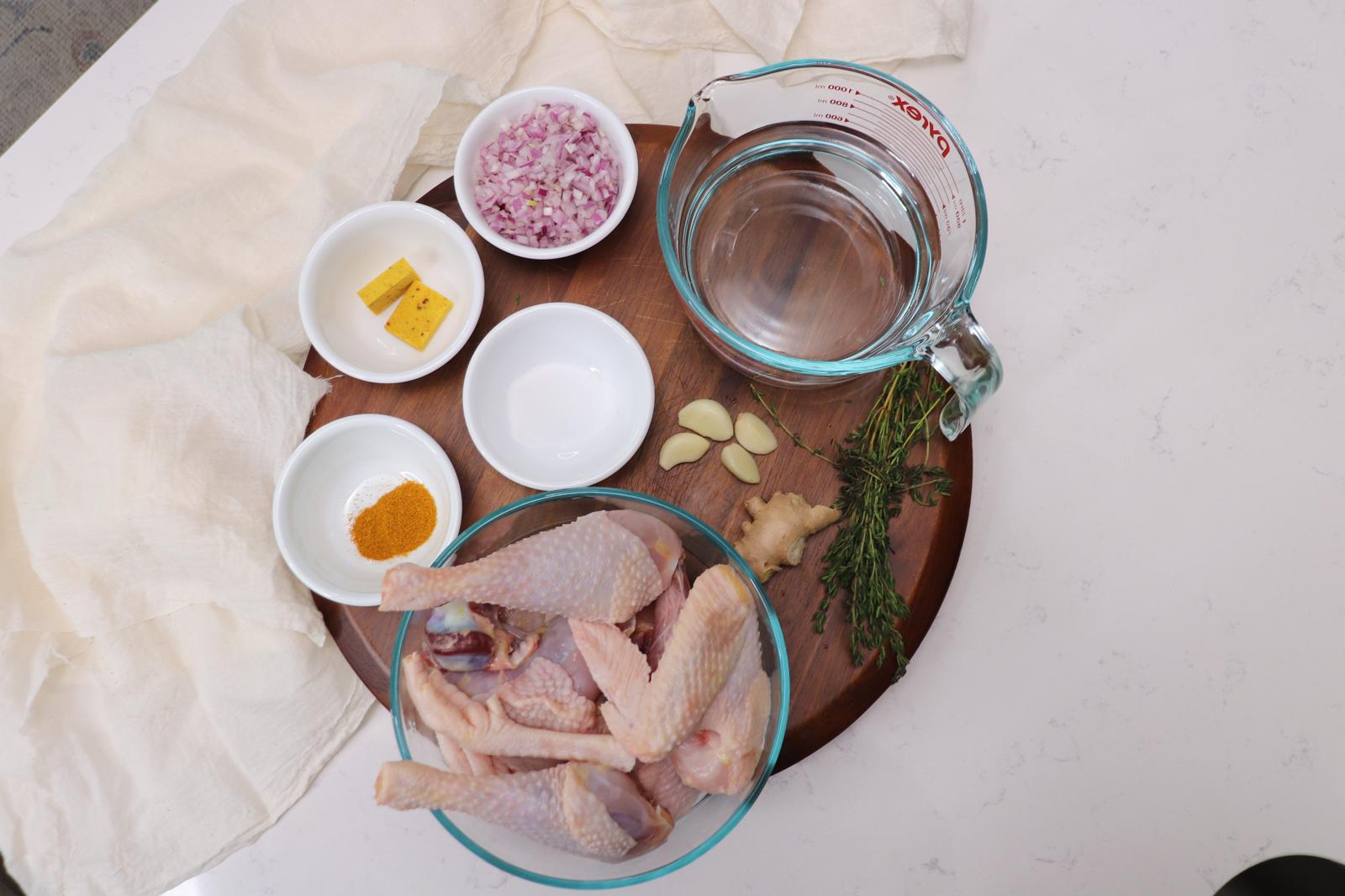 Chicken:
Chicken:
We’re using an old layer chicken or any stewing chicken for its rich, deep flavor. Stewing chickens are ideal because their meat becomes tender during the slow cooking process, while infusing the stock with incredible depth. If unavailable, regular chicken works too, but the flavor may be milder.
Onion:
Half a chopped onion adds sweetness and enhances the aromatics of the stock. Purple onions or sweet onions are great choices for their robust flavor.
Fresh Thyme:
A bunch of fresh thyme adds earthy and herbal notes to the stock. If fresh isn’t available, you can substitute with 1 teaspoon of dried thyme.
Curry Powder:
A teaspoon of curry powder adds warmth and a subtle spice blend that complements the chicken beautifully.
Garlic and Ginger:
Four garlic cloves and a thumb-sized piece of ginger create a fragrant base with their spicy, zesty notes, balancing the rich flavor of the chicken.
Water:
Four cups of water provide the liquid base for the stock, helping to extract the flavors from the chicken and aromatics as it simmers.
Oil (for Frying):
Two cups of vegetable oil are used to fry the chicken to a golden, crispy perfection. This same oil will later be reserved to prepare the stew base, ensuring no flavor is wasted.
For the Stew Base
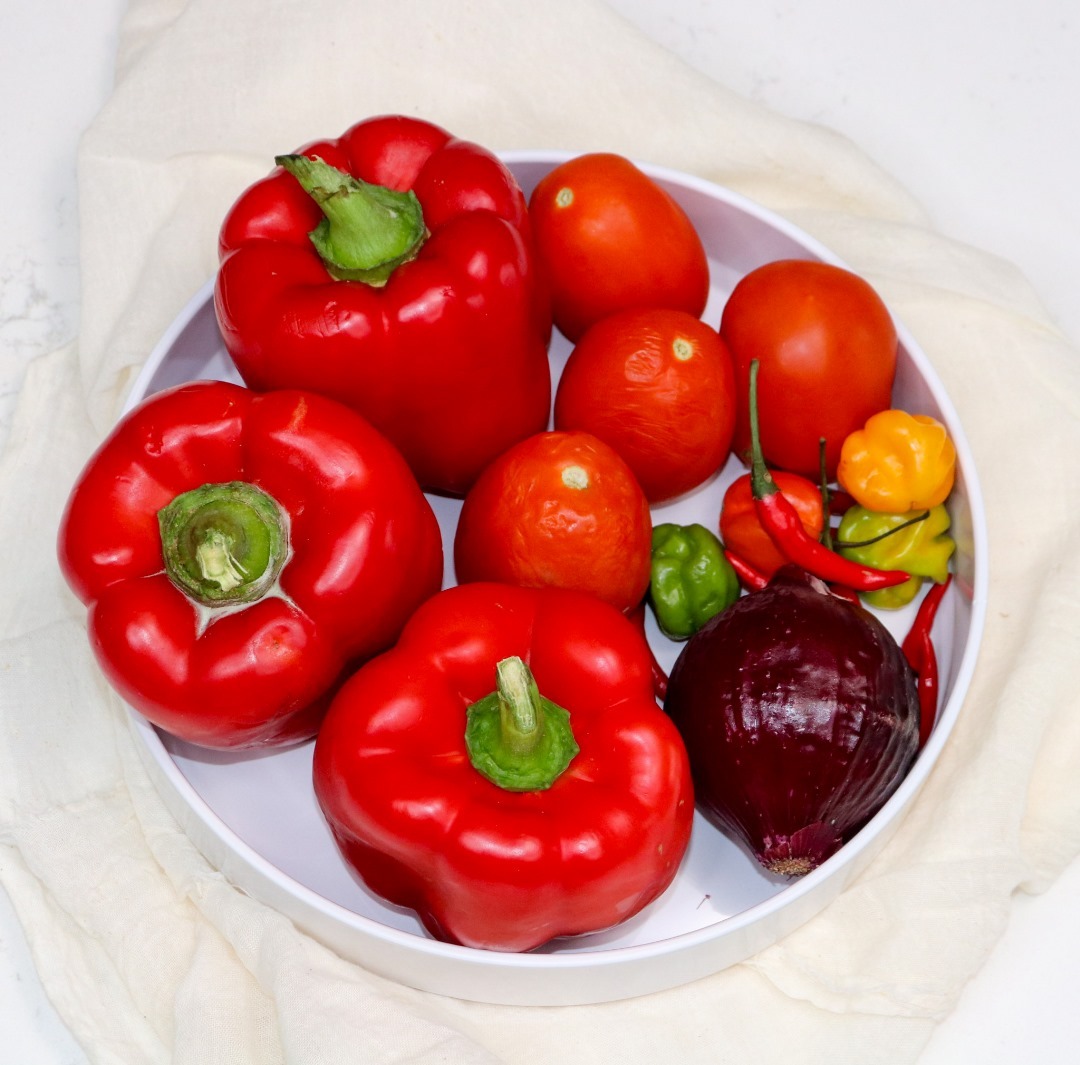 Red Bell Peppers:
Red Bell Peppers:
Three large red bell peppers (locally called tatashe) are the heart of the Jollof stew. They bring a sweet, smoky flavor and a vibrant red color to the dish. Remove the seeds for a smoother blend.
Tomatoes:
Four plum tomatoes (like Roma tomatoes) provide a balance of acidity and sweetness, creating a rich, well-rounded flavor for the stew.
Scotch Bonnets:
Four scotch bonnet peppers (atarodo) add a fiery kick to the dish. Adjust the quantity based on your heat tolerance, or substitute with habaneros for a similar effect.
Mini Bullet Peppers:
These small but mighty peppers enhance the heat profile of the stew. You can omit or reduce the quantity if you prefer a milder dish.
Purple Onion:
One large purple onion brings sweetness and depth to the roasted pepper mix, complementing the overall flavor profile.
Oil (Reserved):
Half a cup of the flavorful oil used to fry the chicken is reused for the stew. This oil is infused with the essence of the chicken, making the stew richer and more aromatic.
Tomato Paste:
A small tin (150g) of tomato paste intensifies the flavor and deepens the color of the stew, giving Jollof its signature vibrant red hue.
Dried Thyme:
Half a teaspoon of dried thyme adds a hint of earthiness and aromatic depth.
Bay Leaves:
Three small bay leaves bring a subtle herbal flavor and complexity to the stew.
Seasoning Cube:
One seasoning cube (like Maggi or Knorr) enhances the umami profile, tying together all the flavors of the stew.
Optional For the Coleslaw:
- Carrot: 2 medium-sized, peeled.
- Cabbage: 1 small, rinsed in saltwater.
- Optional: Baked beans, boiled eggs, and mayonnaise for added flavor.
For the Jollof Rice
Rice:
Long-grain parboiled rice is traditionally used for Nigerian Jollof because it soaks up flavor beautifully without becoming mushy. Sella basmati rice is another excellent option if you prefer a lighter, fluffier texture.
Chicken Stock:
Three cups of chicken stock (from the stewed chicken) infuse the rice with bold, savory flavors. Homemade stock is best, but you can use a high-quality store-bought option in a pinch.
Butter:
One stick of butter adds a luscious, creamy finish to the rice and prevents the grains from sticking together.
Onion:
A quarter of a sliced onion adds subtle sweetness and aroma to the final cooking phase.
Plum Tomato:
One plum tomato is added for extra bursts of freshness and acidity to complement the rich stew.
All-Purpose Seasoning:
Two teaspoons of all-purpose seasoning enhance the flavor of the rice, ensuring every bite is packed with deliciousness.
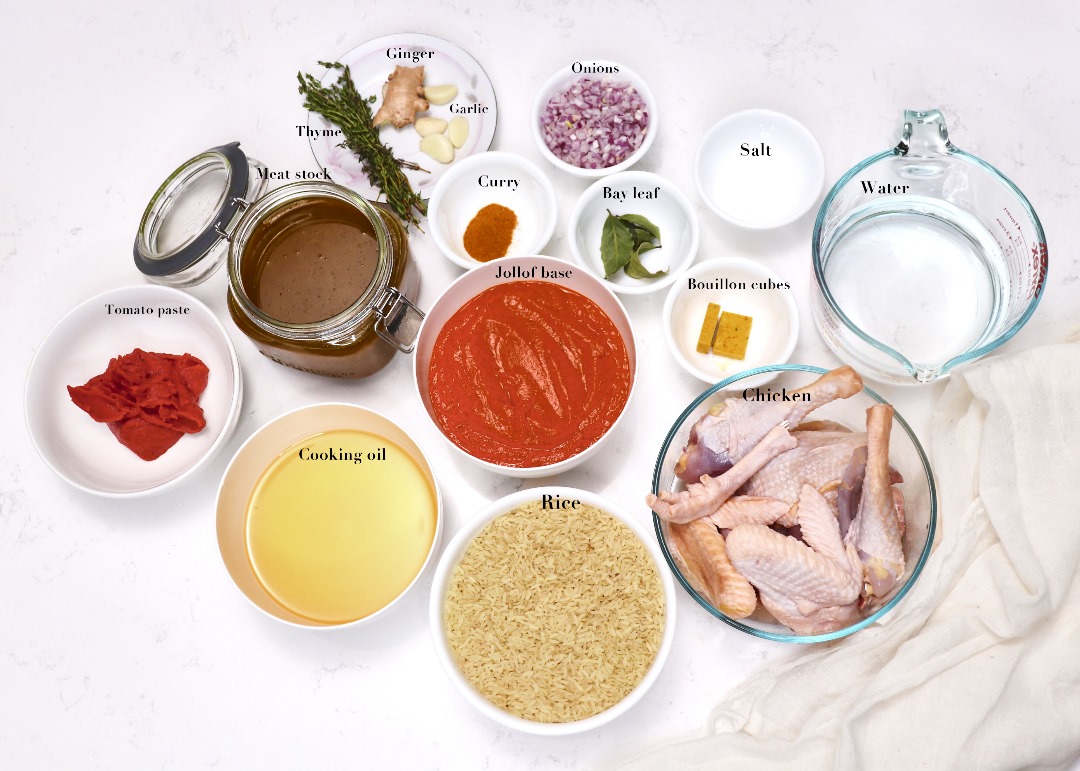
Step-by-Step Guide to Making Jollof Rice
Step 1: Prepare the Meat Stock
- Season the chicken: In a pot, add sliced onions, fresh thyme, curry powder, chopped garlic, ginger, salt, and chicken seasoning.
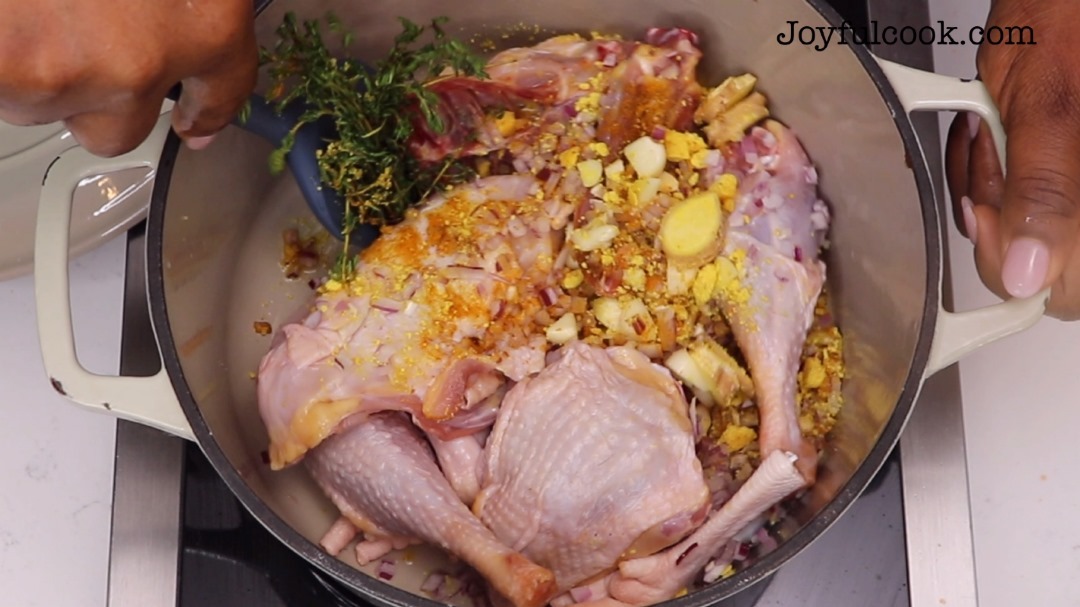
- Cover and steam for about 20–25 minutes until it releases its own juices.
- Add water to the pot and let it cook until tender (about 35–40 minutes).
- Remove the chicken and strain the stock to remove bones or unwanted particles.
Step 2: Prepare the Pepper Mix
- Wash bell peppers, Scotch bonnet, and tomatoes in saltwater. Remove seeds from the bell peppers and inspect tomatoes for worms.
- Roast the peppers:
- Option 1: Stovetop: Heat oil in a pan, place peppers, Scotch bonnet, and onions face down, and roast on medium heat. Flip sides after 12 minutes. Total roasting time is about 25 minutes.
- Option 2: Oven: Place peppers in a baking dish, drizzle with oil, and roast at 450°F (232°C) for 30–35 minutes.
- Alternative: Blend the peppers and boil the mix until it thickens
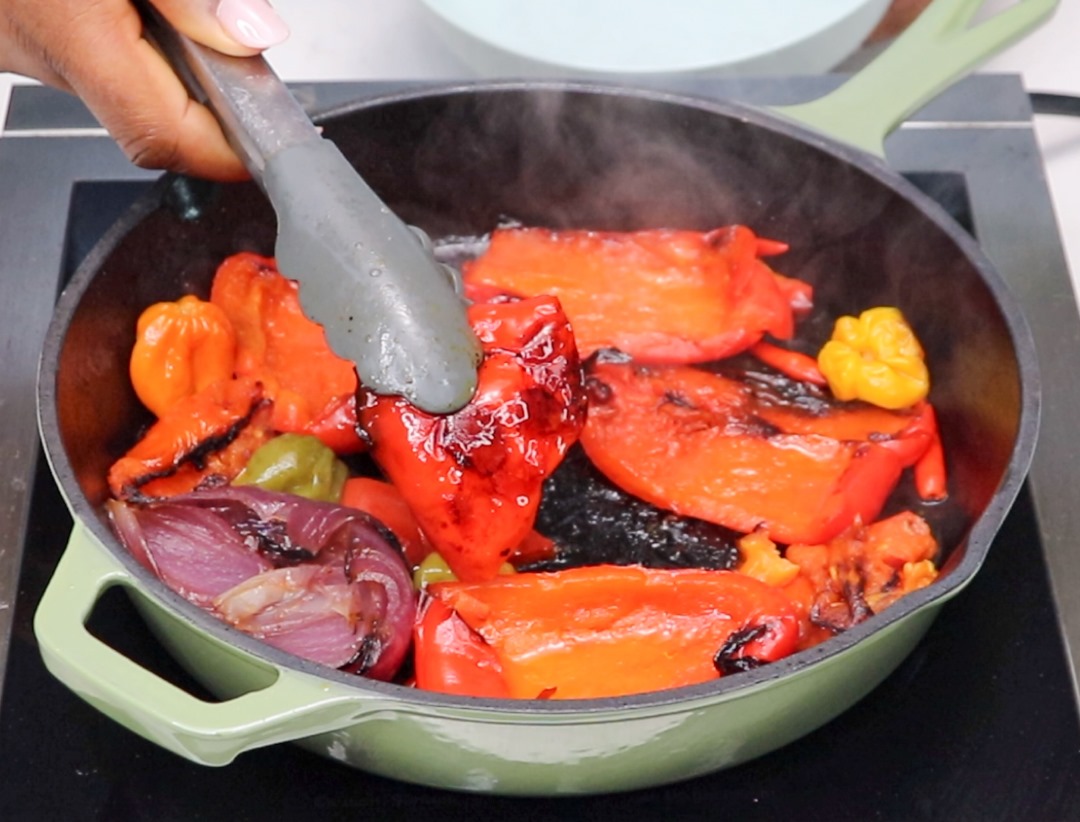
- Blend all roasted vegetables (without water) into a smooth pepper base, likewise blend red bell peppers, scotch bonnets, tomatoes, and onions into a smooth paste.
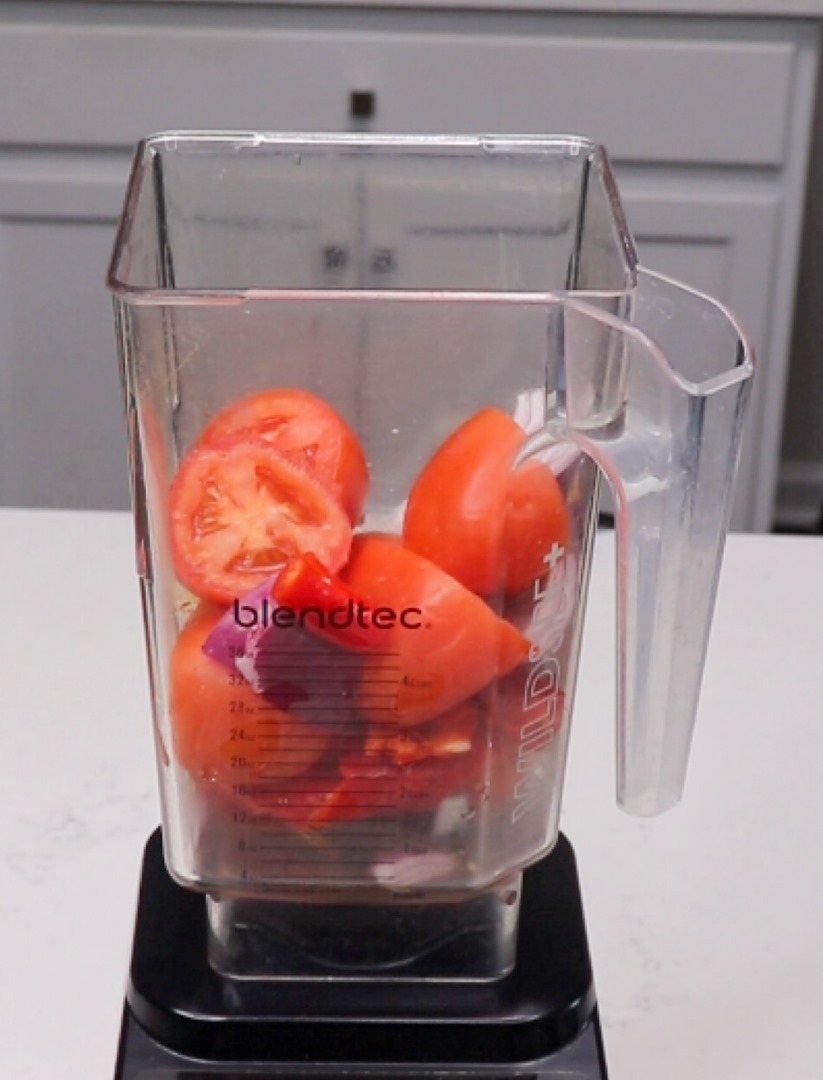
- Pour the blended mixture in a bowl
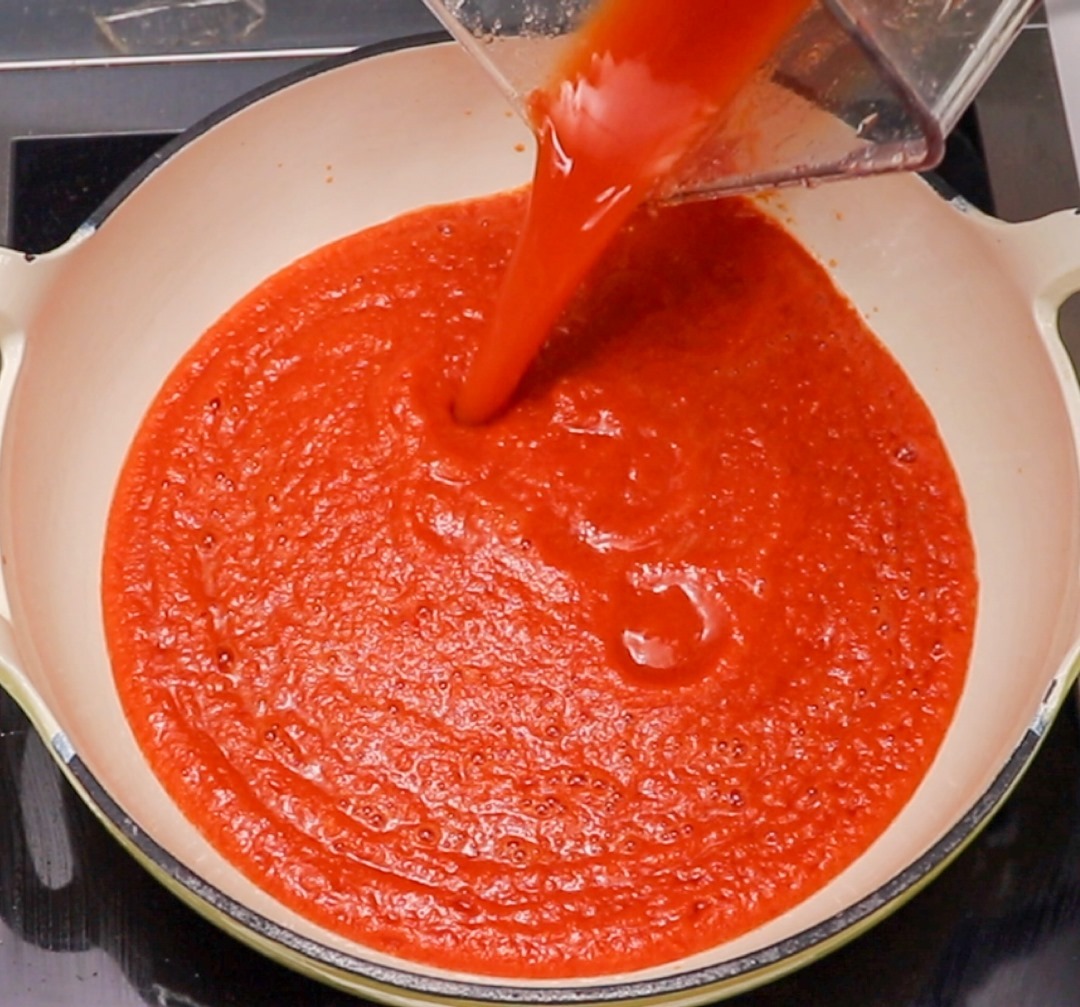
- Now you have two blended mixtures of roasted pepper and tomatoes mix and the other mixture you blended.
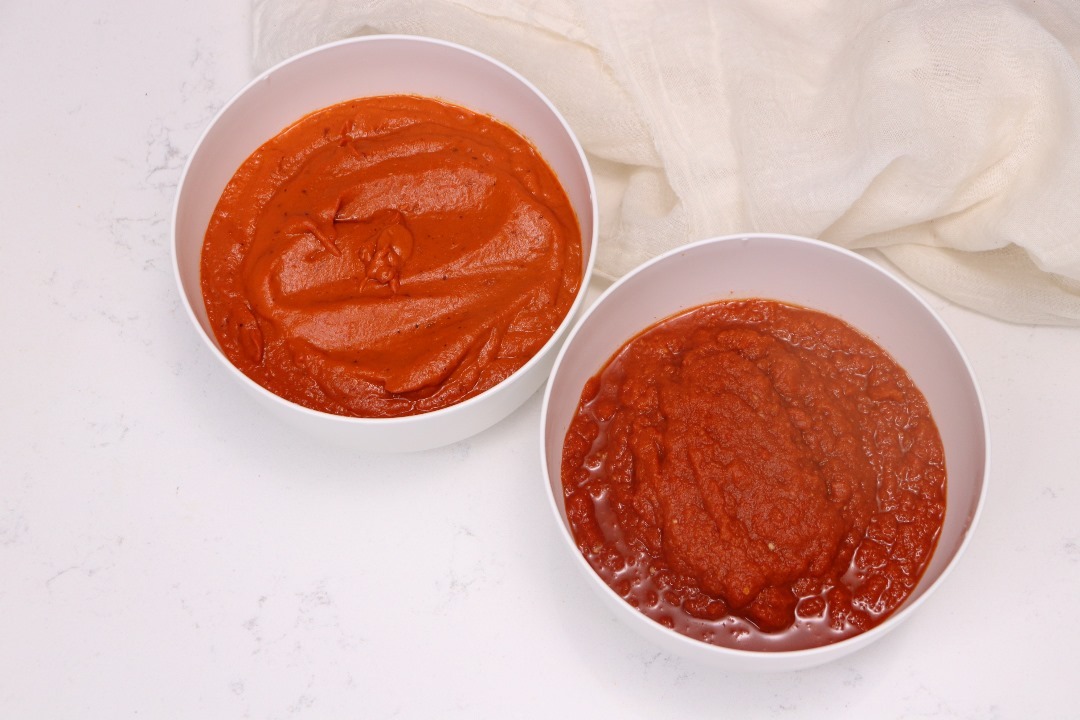
Step 3: Fry the Chicken
- Heat vegetable oil in a pan, add onion slices to flavor the oil, and fry the chicken lightly until golden brown. (Alternatively, air-fry or grill for a healthier option.)
- Set aside the oil used for frying.
Step 4: Prepare the Stew Base
- Heat the reserved oil, reduce the quantity if necessary, and fry diced onions on medium heat until fragrant.
- Add thyme, bay leaves, and optional shallots. Fry briefly to release flavors.
- Lower the heat and fry tomato paste until it becomes sweet and separates from the oil (about 10 minutes).
- Add the roasted pepper mix to the pot, stir well, and allow it to fry together for a few minutes.
Step 4: Cook the Jollof Rice
- Rinse the rice thoroughly to remove excess starch.
- Add washed rice to the stew base, mixing thoroughly.
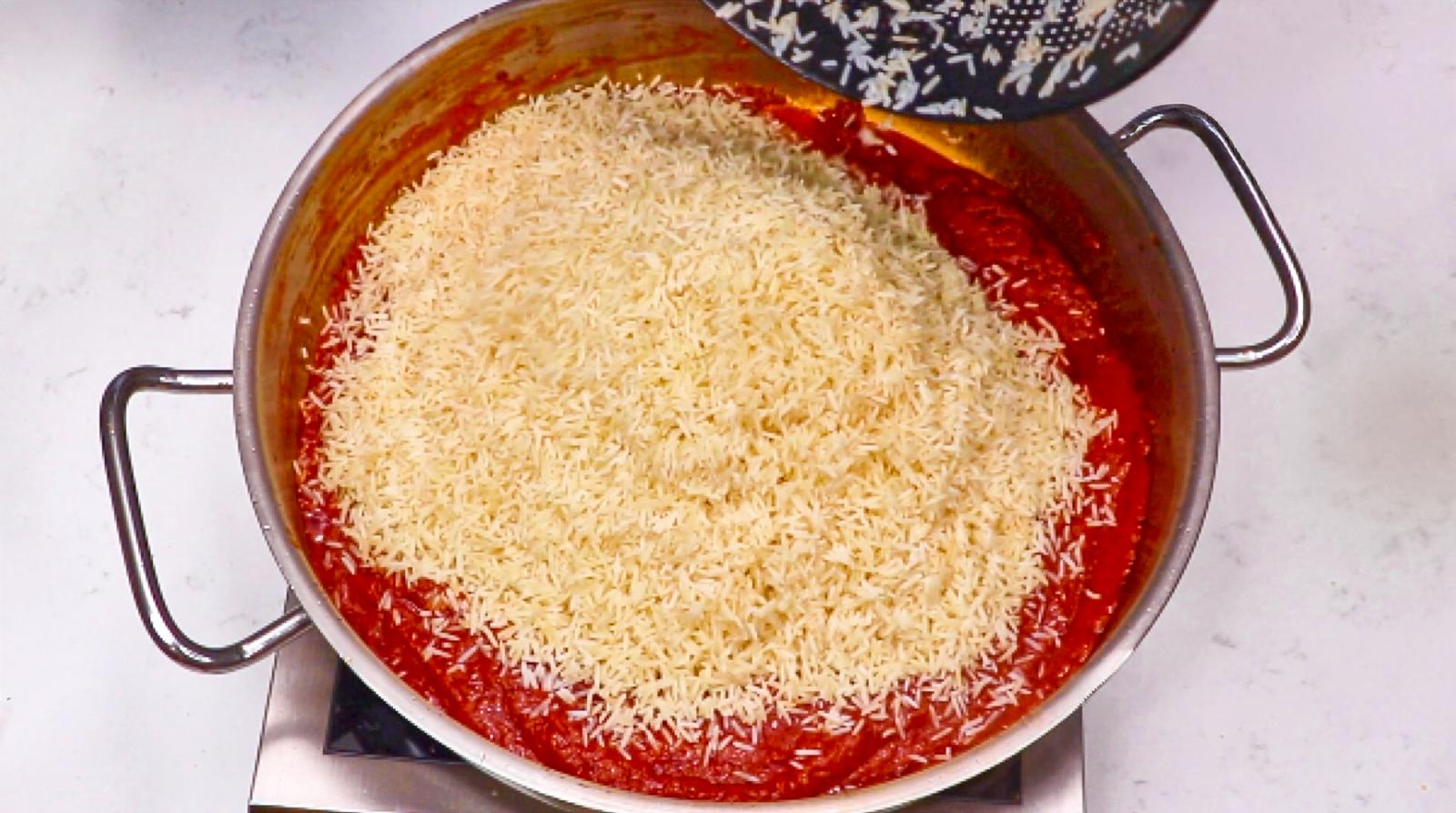
- Add the meat stock, ensuring the liquid covers the rice. Adjust seasoning if necessary.
- Cover tightly with foil or a lid, reduce the heat, and let the rice cook until tender and the liquid is absorbed. Stir occasionally to prevent burning.
- Once cooked, allow the rice to steam on low heat for a smokey flavor.
How to Serve Jollof Rice
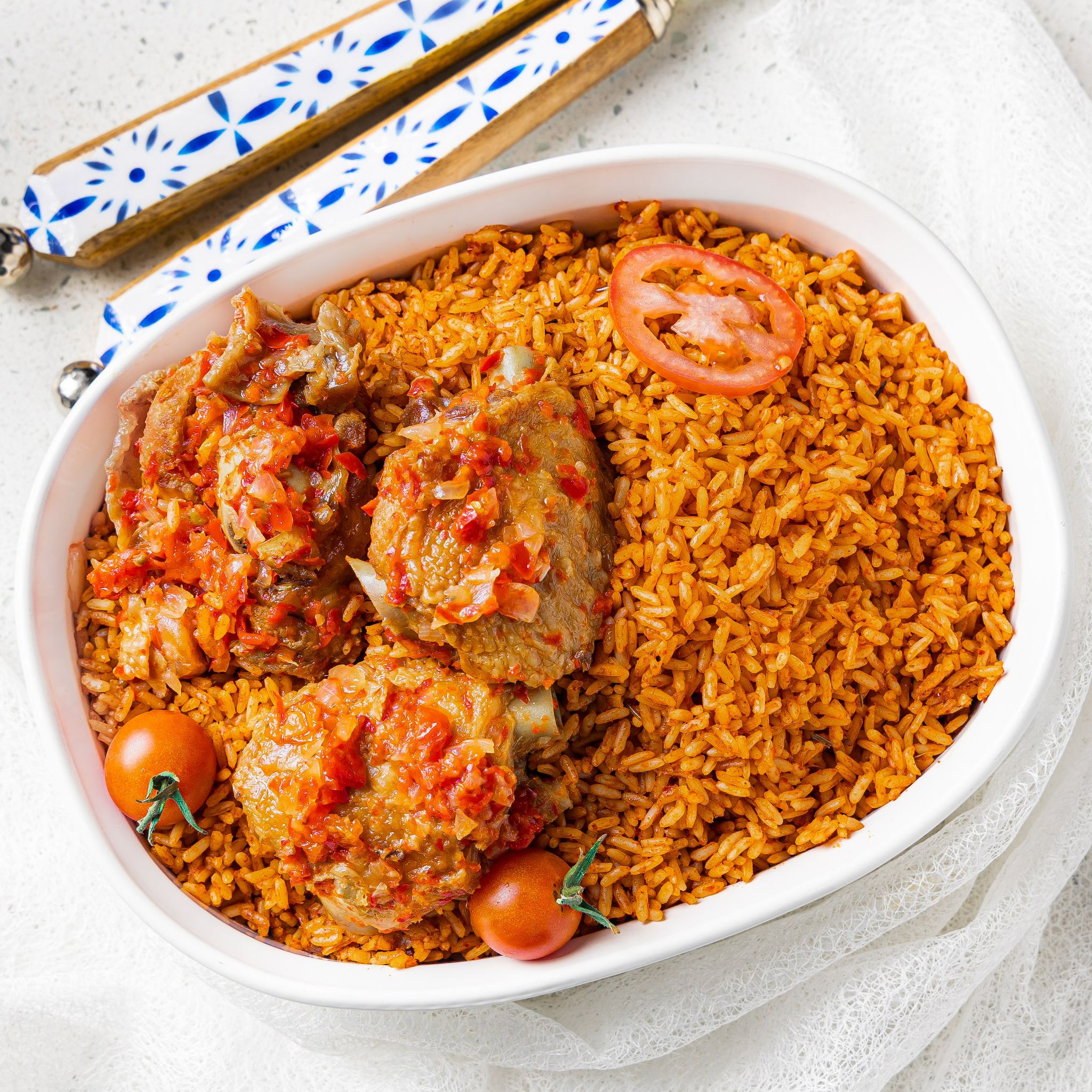 Nigerian Jollof pairs beautifully with
Nigerian Jollof pairs beautifully with
- fried plantains
- grilled or fried chicken
- a side of fresh salad or coleslaw.
Steps to prepare the perfect coleslaw
Prepare the Cabbage
Remove the outer layer of the cabbage. Cut it into manageable portions and shred it as thinly as possible with a sharp knife.
💡 Health benefits of cabbage (Healthline)
Prepare the Carrot
Peel or scrape off the outer layer to reveal the vibrant orange color. Grate the carrot using the larger side of a box grater.
💡 Why carrots are good for your eyes and more (WebMD)
Optional Additions
Rinse the sauce off baked beans and set them aside. Boil eggs, peel them, and chop into bite-sized pieces.
Assemble
In a mixing bowl, combine shredded cabbage, grated carrot, baked beans (if using), and eggs. Mix everything evenly.
Chill and Serve
Refrigerate the coleslaw until cold. Serve it as-is with Jollof rice.
For a standalone version, you can add sliced apples for sweetness and a splash of milk with mayonnaise for creaminess.
📌 What is mayonnaise really made of? (BBC Good Food)
 For a complete party vibe, serve with moi moi (steamed bean pudding) or sautéed vegetables.
For a complete party vibe, serve with moi moi (steamed bean pudding) or sautéed vegetables.
For a Complete Party Vibe
Serve your Jollof with:
Pro Tips for Perfect Jollof Rice
-
- Layer Flavors: Use chicken frying oil and a mix of fresh and dried spices for depth.
- Low Heat: Slow-cooking ensures even absorption of flavors without burning.
- Steaming Method: Foil traps steam, cooking the rice evenly and preventing mushiness
Tips for Smoky Flavor:
- Roasting the peppers adds a smoky depth.
- Use a heavy-bottomed or cast iron pot for the best results.
- Slightly burn some rice at the bottom of the pot for an authentic “party jollof” taste.
Why cast iron is perfect for high-heat cooking (Serious Eats)
What Type of Pot is Best for Nigerian Jollof Rice?
When it comes to cooking authentic Nigerian Jollof rice, the type of pot you use can significantly impact both the flavor and the cooking process. The right pot not only ensures even cooking but also contributes to that beloved smoky aroma that gives Jollof its signature “party” vibe. Let’s explore the best options:
Enameled Cast Iron Dutch Oven
For a modern yet authentic take on Jollof rice, an enameled cast iron Dutch oven is an excellent choice. Its superior heat retention and even distribution make it perfect for slow, steady cooking, which is essential for achieving the bold flavors of Nigerian Jollof. Plus, the enamel coating ensures your rice doesn’t stick excessively, while still allowing some gentle charring at the bottom for that traditional smoky flavor.
🎉 Shop now on Joyful Cook! Our stunning Enameled Cast Iron Dutch Ovens, available in elegant green and cream colors, are ideal for preparing your Jollof masterpiece. Not only do they perform beautifully, but they also bring a stylish touch to your kitchen.




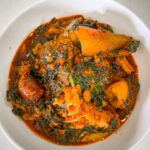
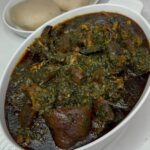







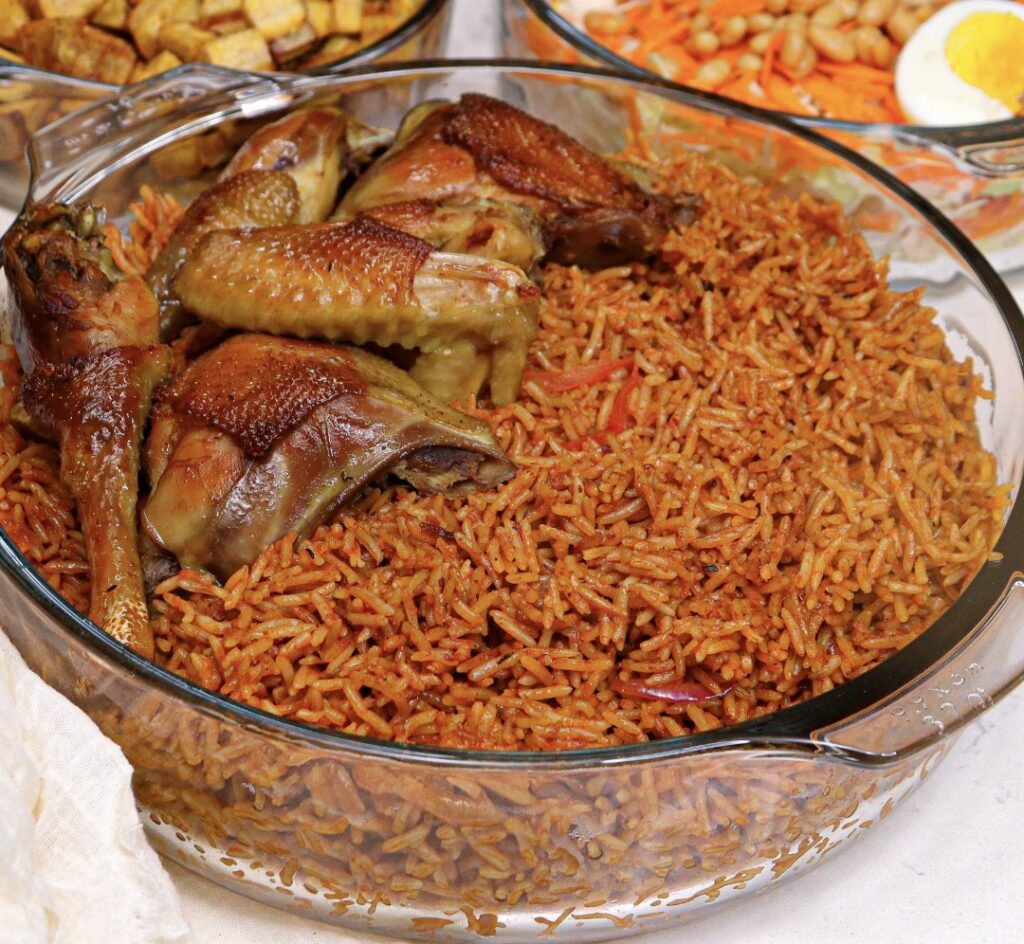
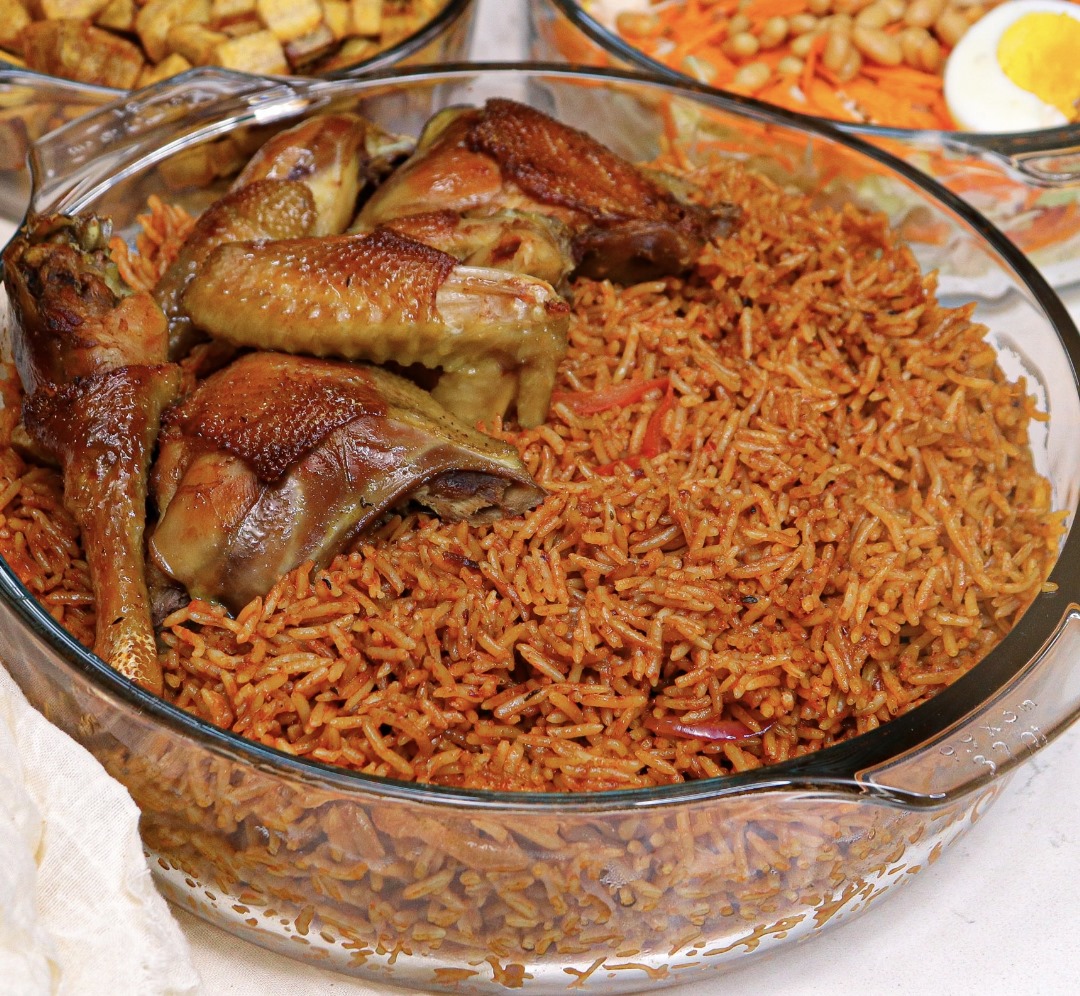
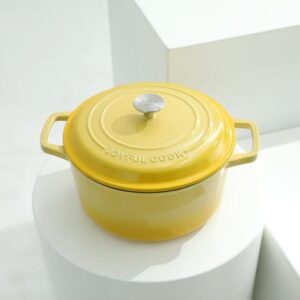

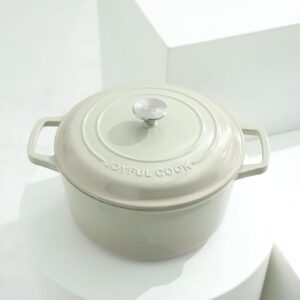
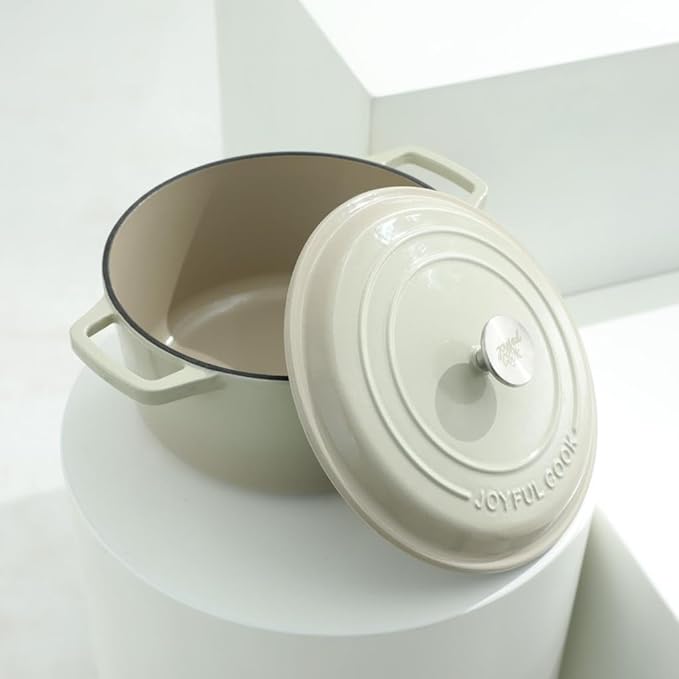
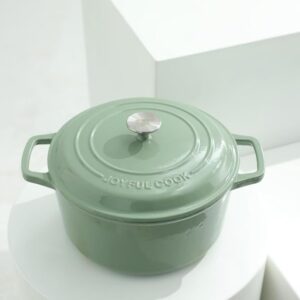
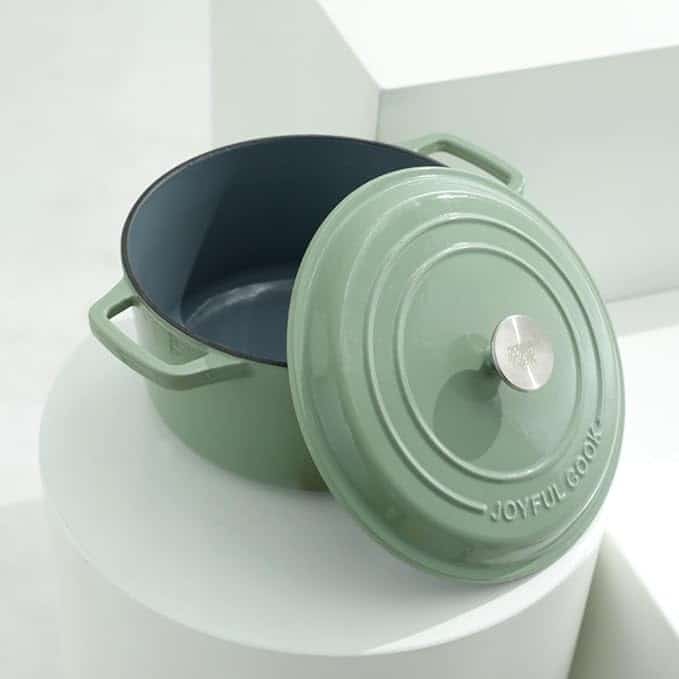
 Chicken:
Chicken: Red Bell Peppers:
Red Bell Peppers:






 Nigerian Jollof pairs beautifully with
Nigerian Jollof pairs beautifully with For a complete party vibe, serve with moi moi (steamed bean pudding) or sautéed vegetables.
For a complete party vibe, serve with moi moi (steamed bean pudding) or sautéed vegetables.

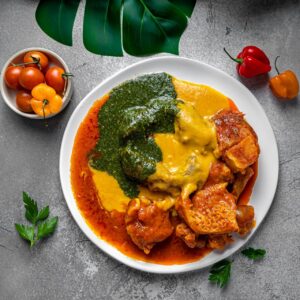
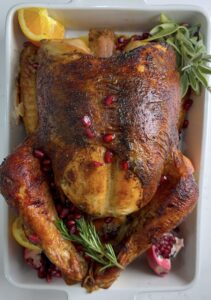



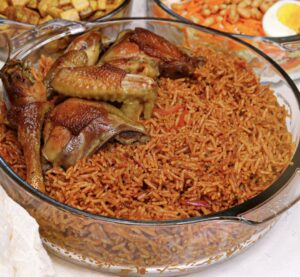

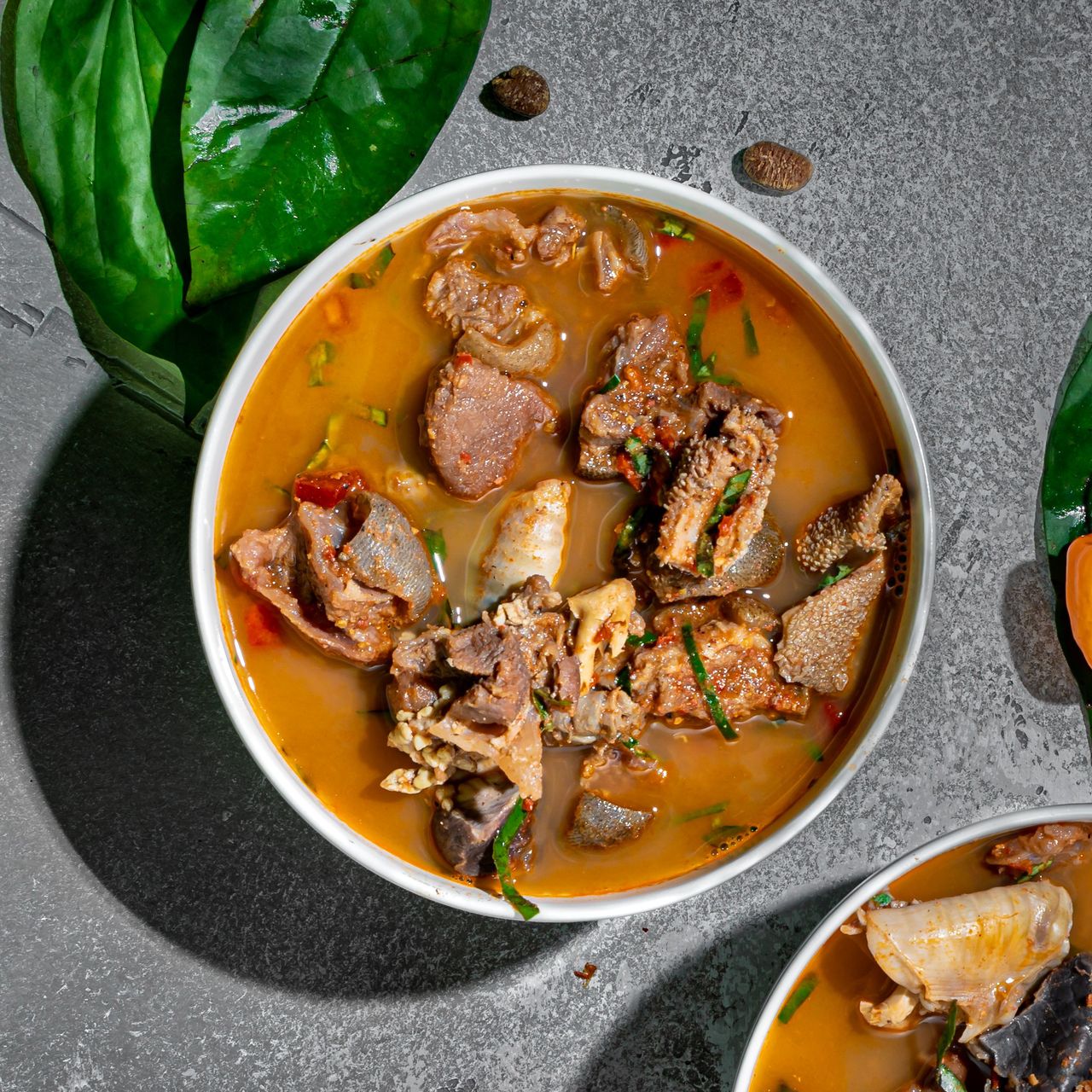
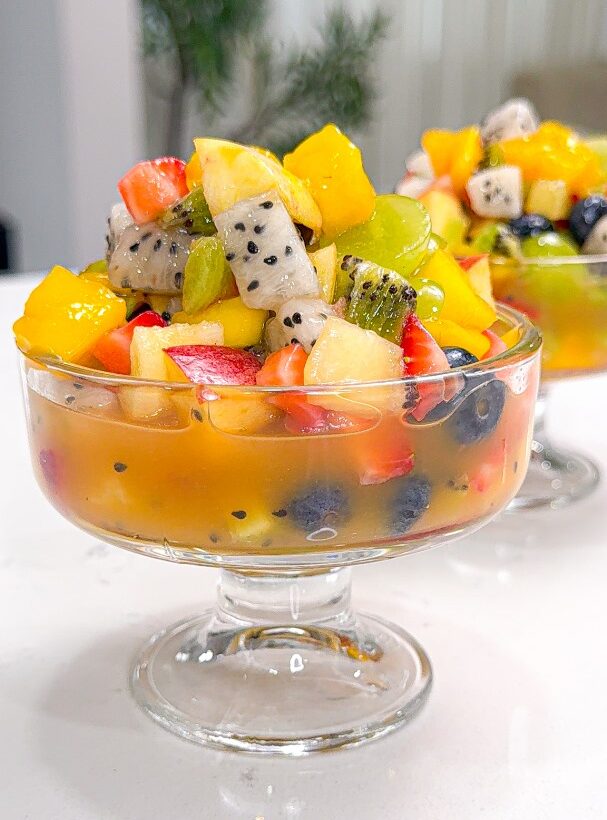
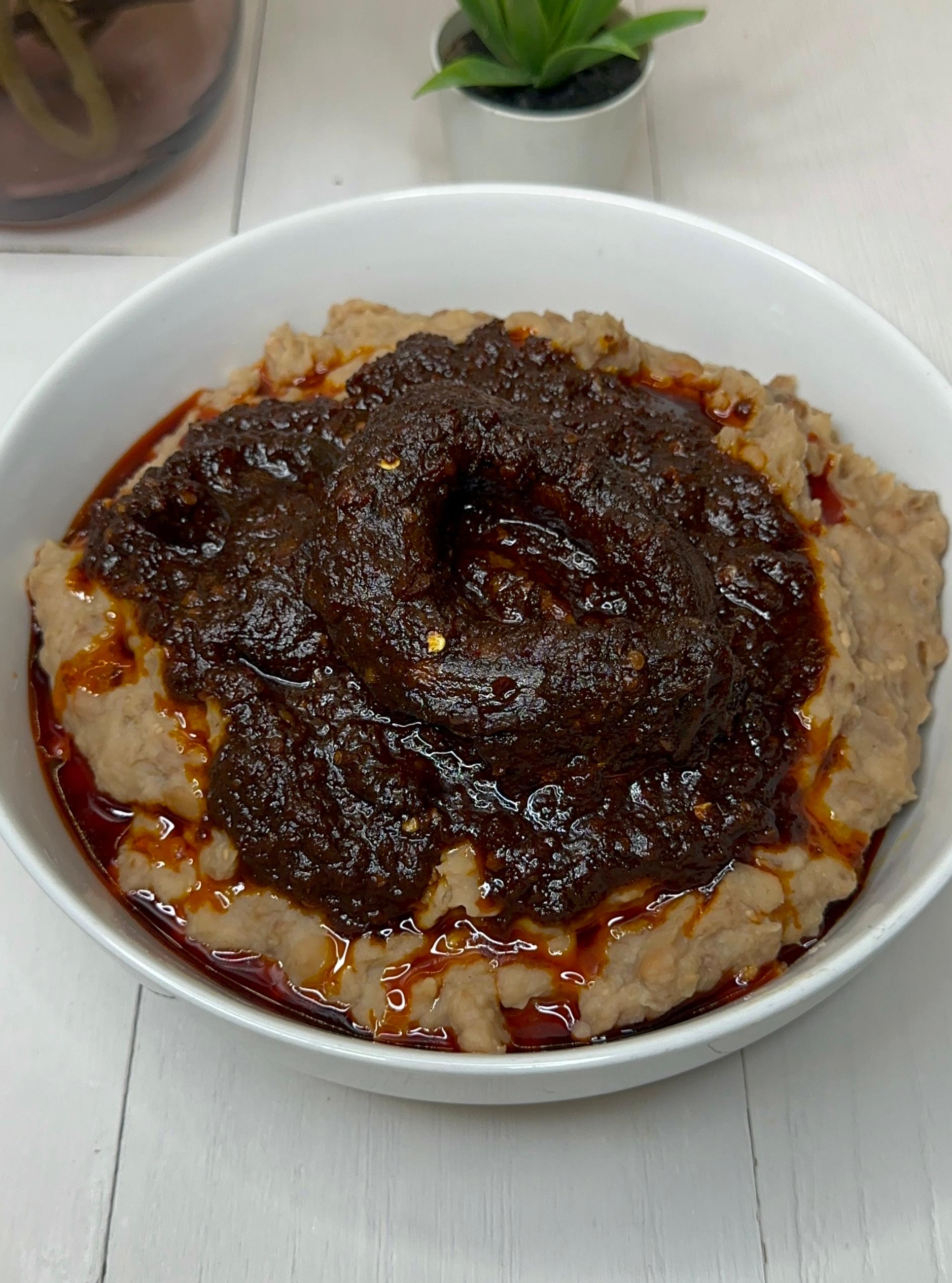
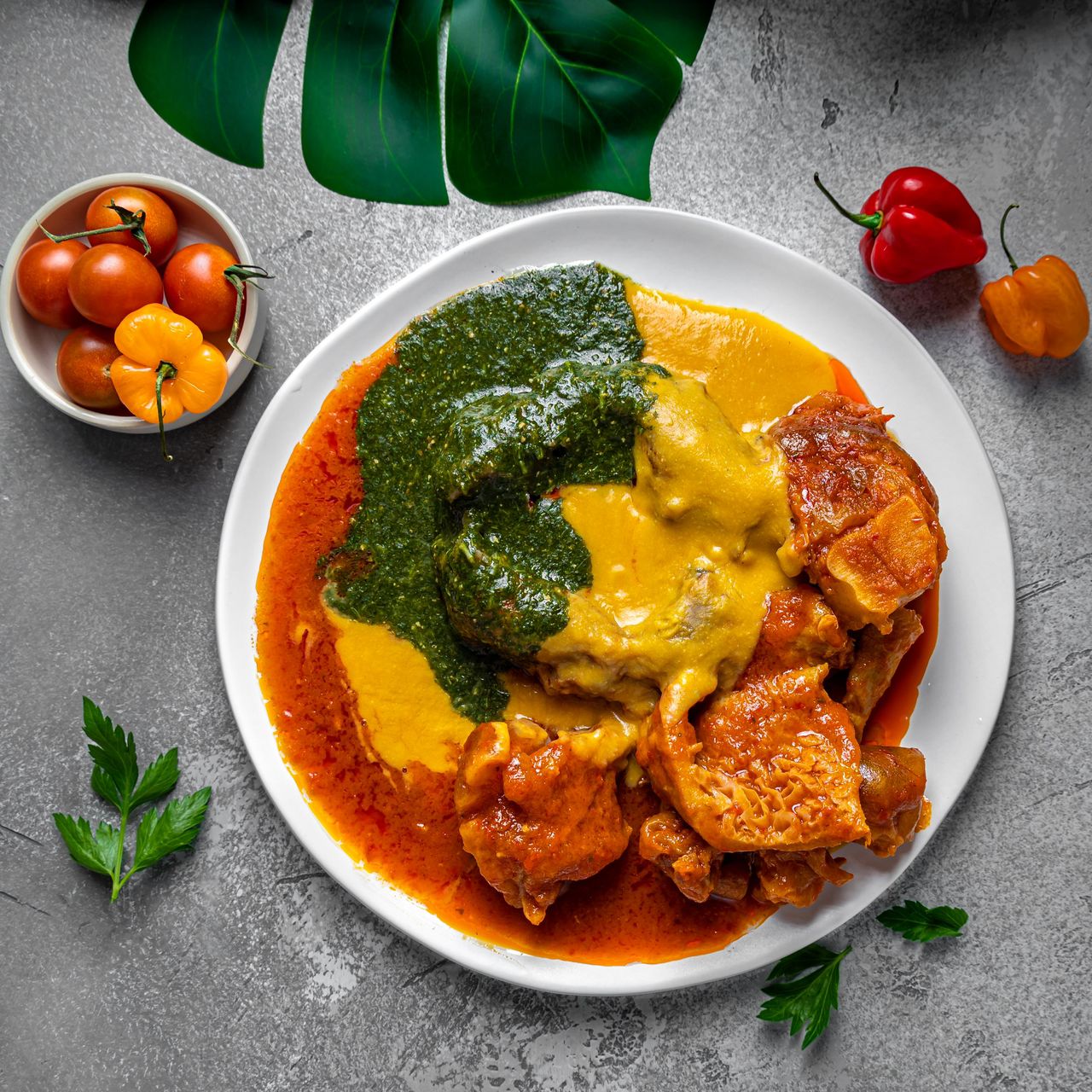




I followed your recipe to the letter, and it’s hands down the best Jollof I’ve ever made. My husband couldn’t stop praising my cooking
I’m glad it turned out great Chinwe
This recipe brought back so many memories of home. The flavor was spot on, although I might reduce the salt next time. Thanks for keeping the tradition alive
Im glad you liked it Sonia